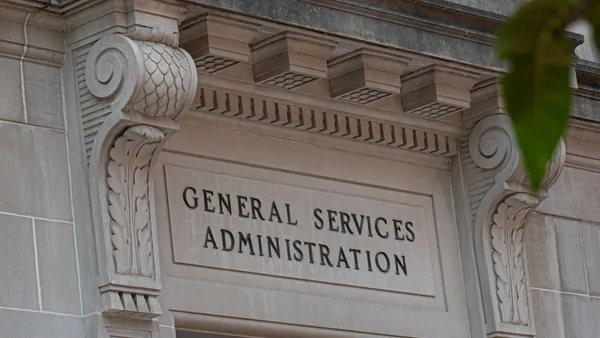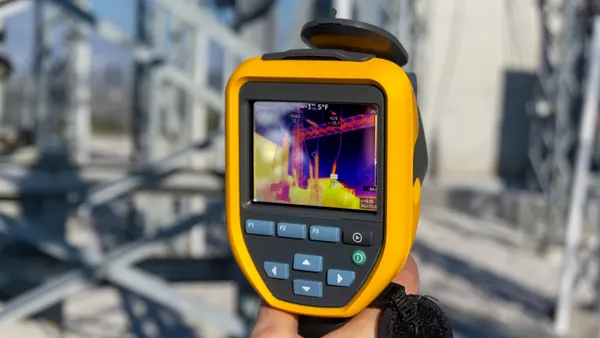Dive Brief:
- The incoming Trump administration and Republican-controlled Congress are unlikely to fully repeal the Inflation Reduction Act, but some changes to the landmark 2022 climate and infrastructure law are likely to be enacted in 2025 and phased in over the following years, digital tax credit marketplace Crux said in a post-election report published this month.
- The most politically vulnerable IRA provisions appear to be its electric vehicle subsidies, which are expensive and politically unpopular with Republicans, followed by its energy efficiency incentives, energy and tax policy experts said during a Nov. 19 webinar briefing Crux hosted to discuss the report’s findings and the broader outlook for the IRA.
- Despite potential changes to IRA incentives, clean energy projects may be able to take advantage of current IRA investment and production tax incentives through the Internal Revenue Service’s “safe harbor” provision, which allows projects that have begun work or undertaken at least 5% of the project cost to qualify for tax treatment under existing law, Crux said in the report.
Dive Insight:
During the 2024 campaign, President-elect Donald Trump vowed to claw back any unspent funds allocated by the Inflation Reduction Act, calling the law “the Green New Scam.” He was especially critical of the law’s incentives for electric vehicles and offshore wind power, the latter of which he promised to “[end] on day one.”
But experts on the webinar said it’s far too early to say what the new Congress and administration might do to make good on Trump’s promises and what the potential implications might be for facilities owners and managers considering sustainable investments.
The most impactful changes to tax law that could affect renewable energy and energy efficiency incentives would likely come from a legislative effort to extend the 2017 Tax Cut and Jobs Act, which cut taxes for many individuals and businesses and is set to expire at the end of 2025, clean energy policy consulting firm Power Brief’s founder and CEO, Jason Clark, said on the webinar.
According to Crux’s analysis, an “unlikely” full repeal of the IRA would generate about $600 billion in reduced federal spending through 2033. That would be a “drop in the bucket” compared with the estimated $4.5 trillion cost of a 10-year extension of the tax law, leaving Congress and the administration to weigh the political popularity of many IRA manufacturing and production tax credits against the need to find additional sources of savings to fund the tax law extension, Clark said.
“We have to figure out how the tax debate is going to shape up before jumping into the idea that the whole IRA is on the cutting board,” he added.
Webinar participant Jennifer Acuña, a Washington, D.C.-based principal in KPMG’s tax practice and former tax counsel for the Senate Finance Committee and House Ways and Means Committee, had a more pessimistic take. Even IRA provisions with bipartisan support could be trimmed to allow Congress to keep certain prominent provisions of the 2017 tax law, such as the 199A pass-through business deduction, she said.
Eliminating the IRA’s tax credit transferability and elective pay provisions could help lawmakers “keep [credits] on the books but trim some of the fat,” Acuña said.
President-elect Trump has also promised to use his executive authority to impose tariffs on products imported from other countries. During the campaign, he pledged to impose tariffs of 60% on imports from China and up to 20% on imports from other countries. On Monday he said he would impose an additional 10% tariff on all products from China. Existing tariffs on imported Chinese-made solar cells are 50% and on lithium-ion EV batteries are 25%.
Higher tariffs would significantly increase the final cost of many on-site battery energy storage systems at commercial, industrial and institutional properties given that a significant portion of U.S. lithium-ion battery imports originate in China, Anza Renewables CEO Mike Hall told Facilities Dive in an interview.
But recent sharp declines in battery material and component pricing could reduce the financial fallout from higher tariffs for property owners considering energy storage investments, Hall said. In many markets, rising electricity rates and supportive state policies like California’s NEM 3.0, which incentivizes on-site solar-and-storage combinations, will continue to favor sustainable facilities investments despite higher costs for imported equipment, he said.
Hall added that property owners and facility managers will have more domestically-produced, tariff-free options for clean energy equipment in the near future. A customer looking to take delivery in mid-2026 can choose from about 17 vendors of U.S.-assembled solar modules and eight vendors of U.S.-made solar cells, up from two or three apiece before 2022, he said.
In other words, the IRA spurred “about a 400% increase in the number of companies offering [U.S.-made] cells and an even larger increase in the number of companies offering modules,” Hall said. “This trend is going to continue even with the new administration.”










